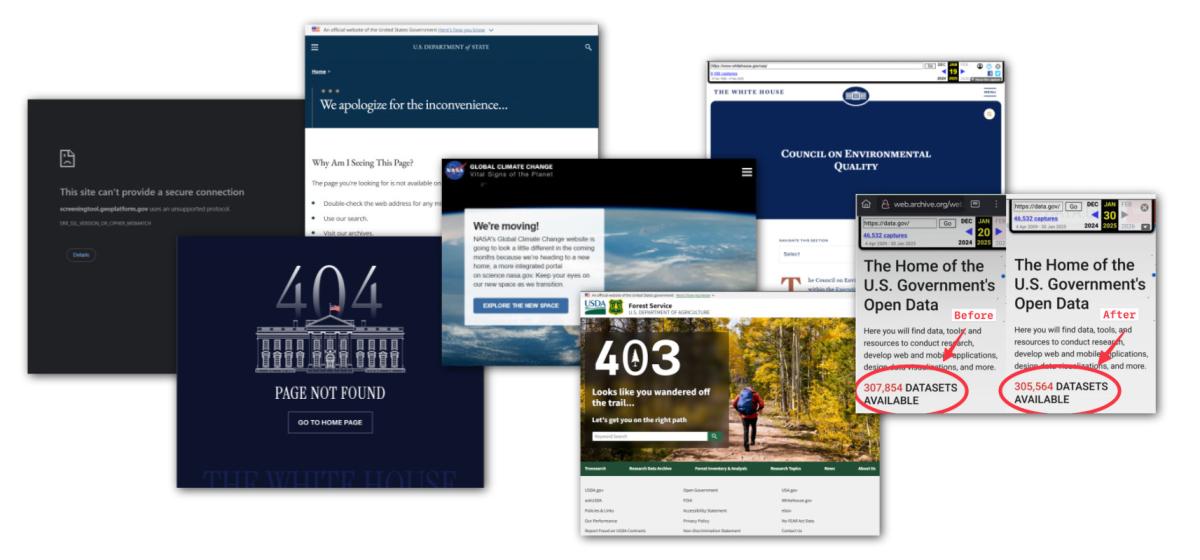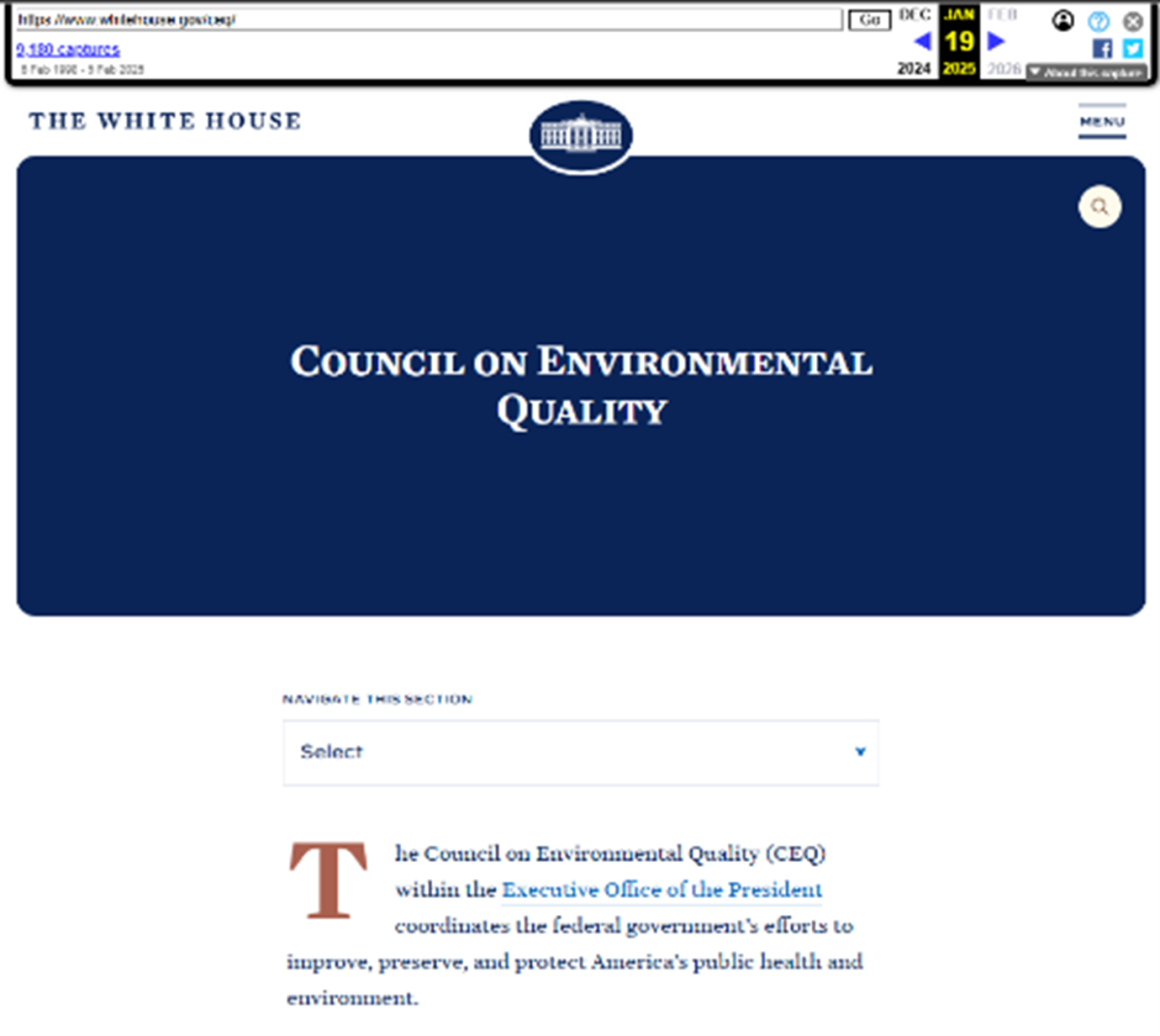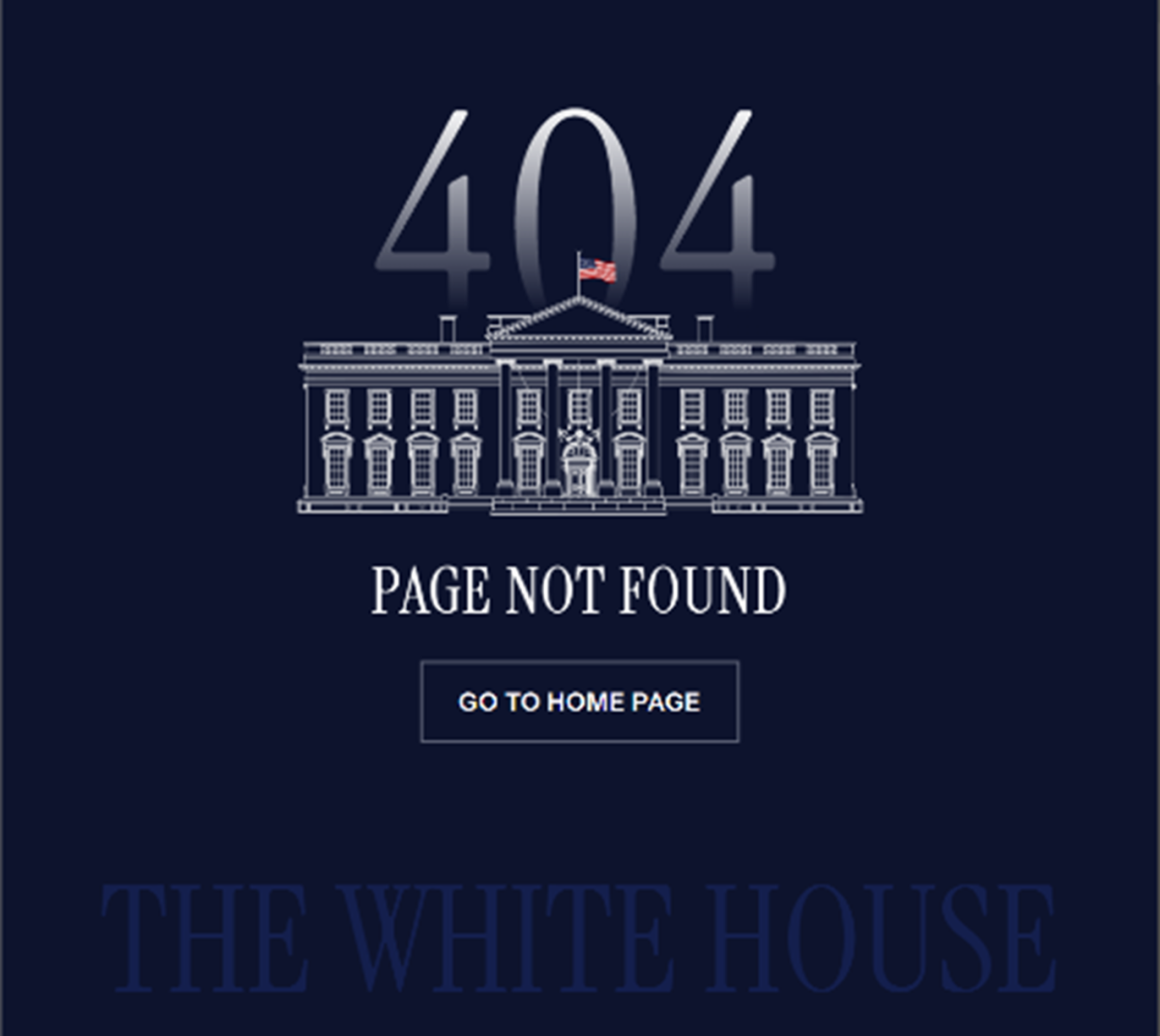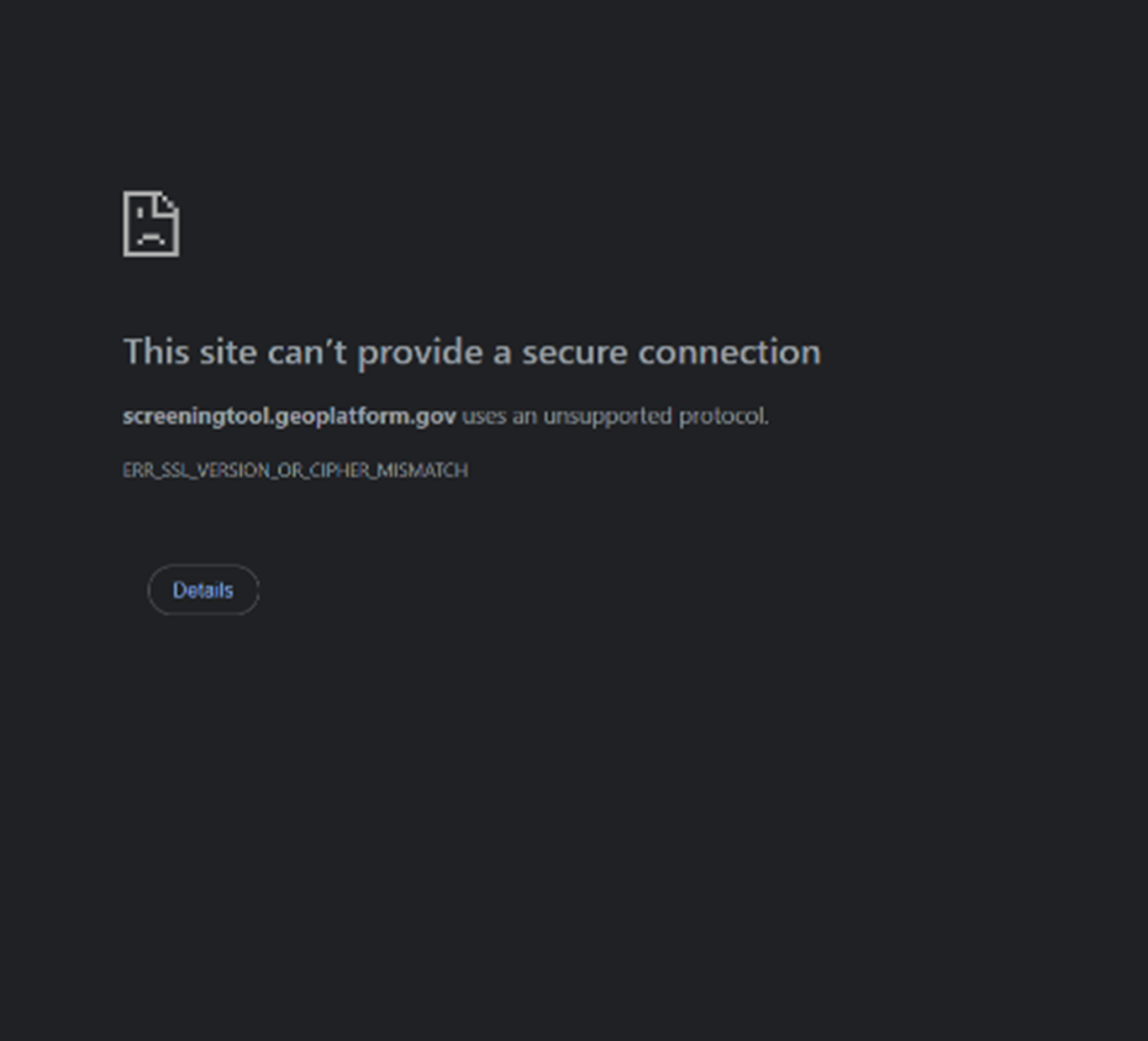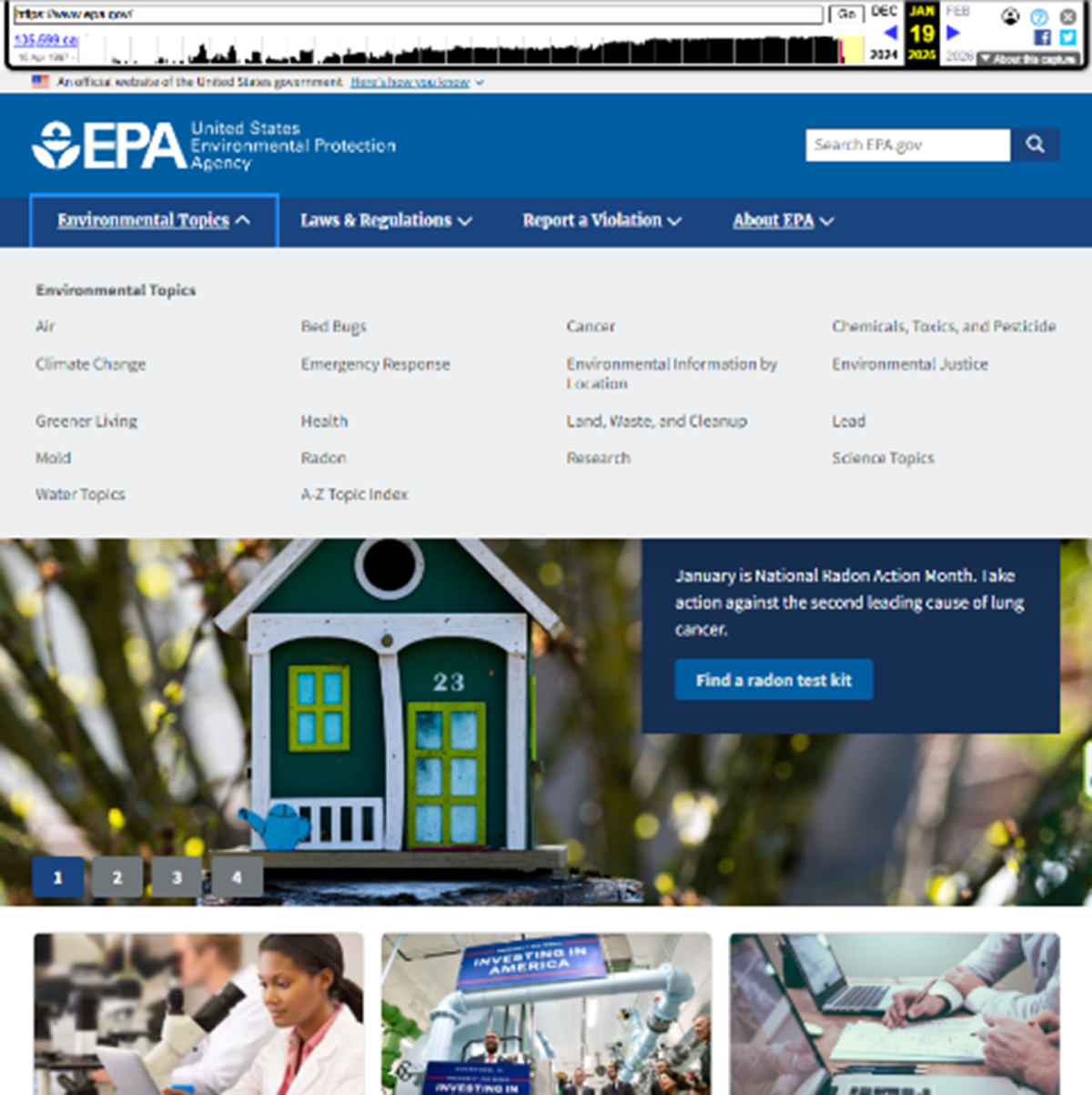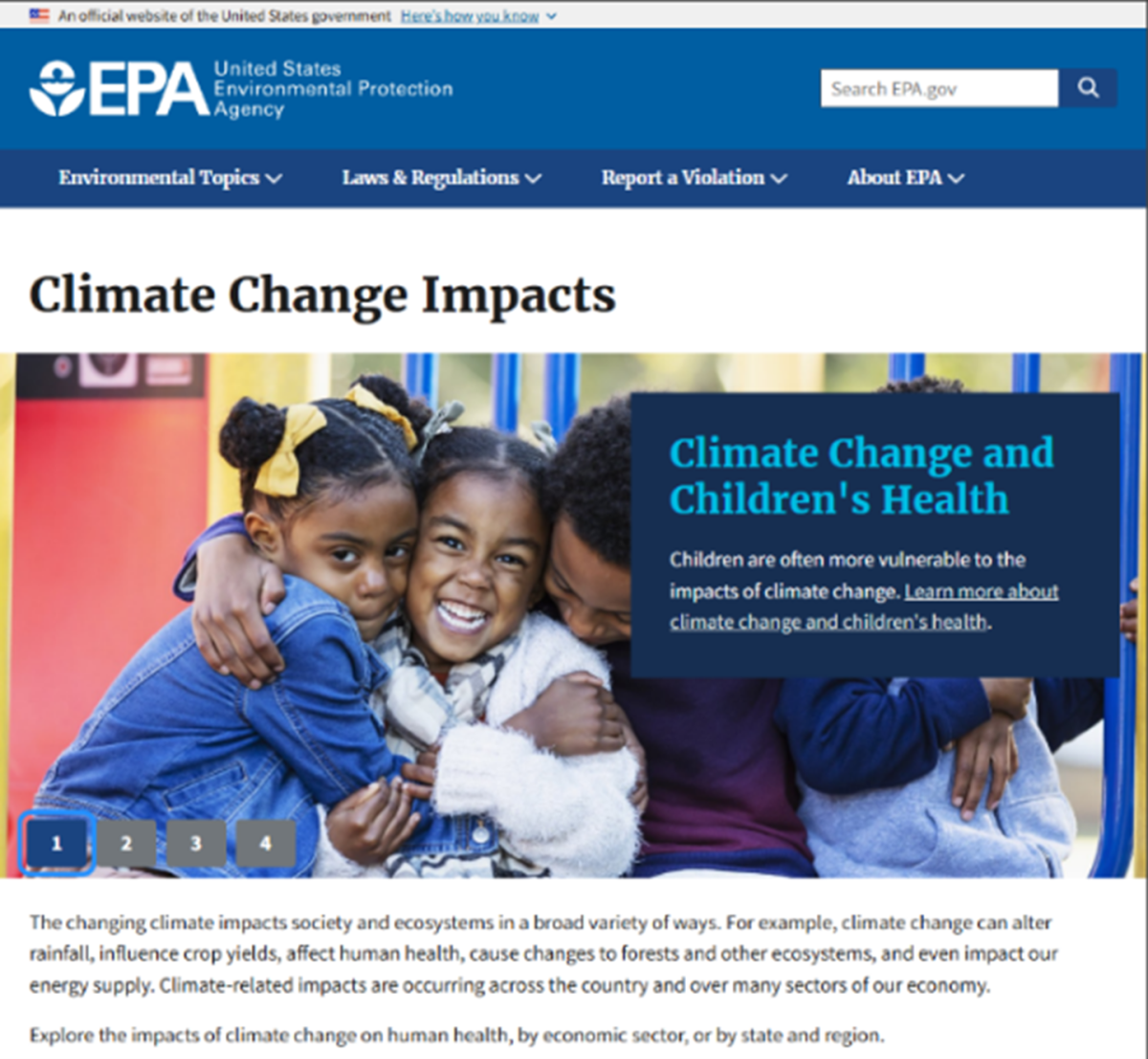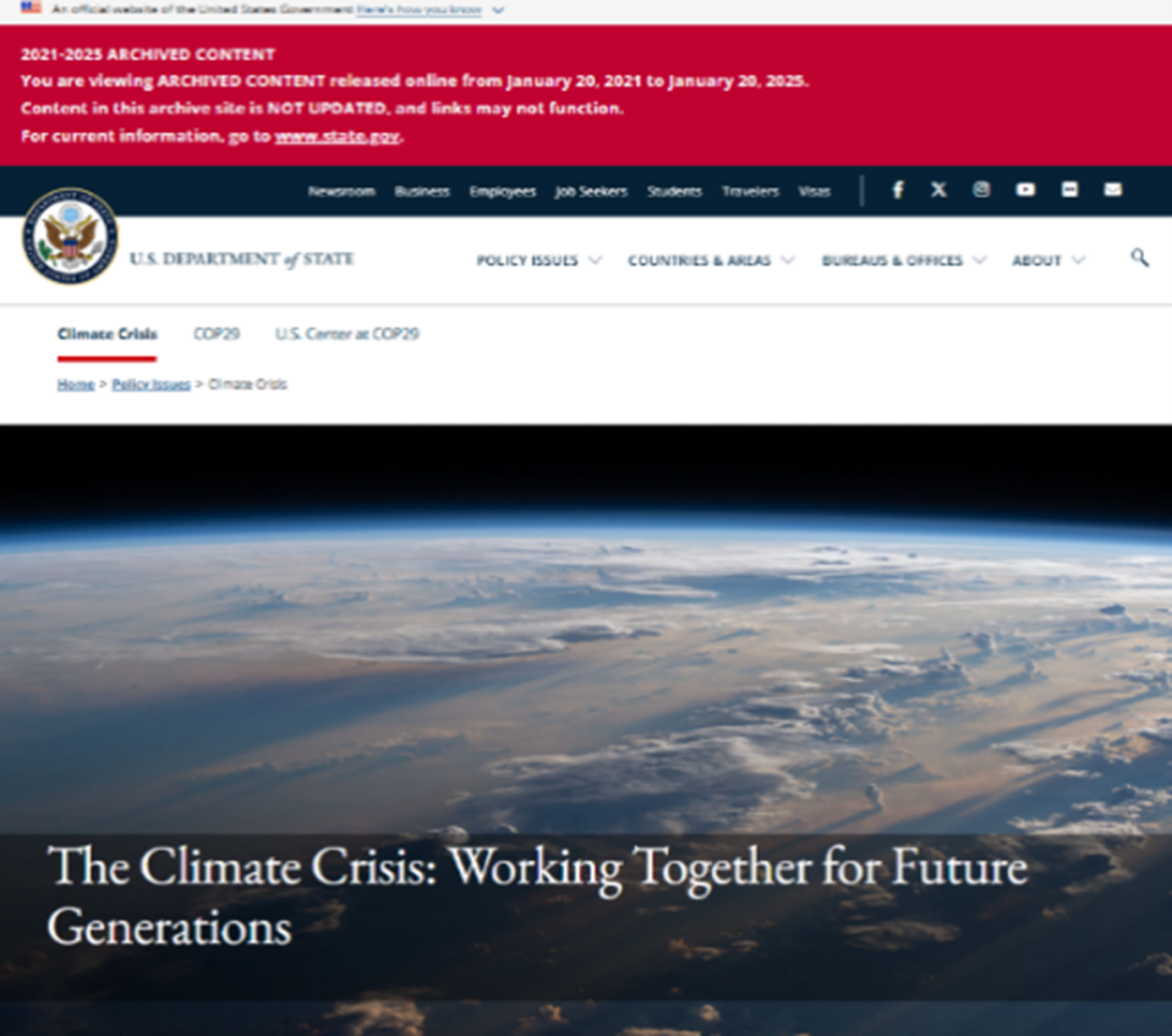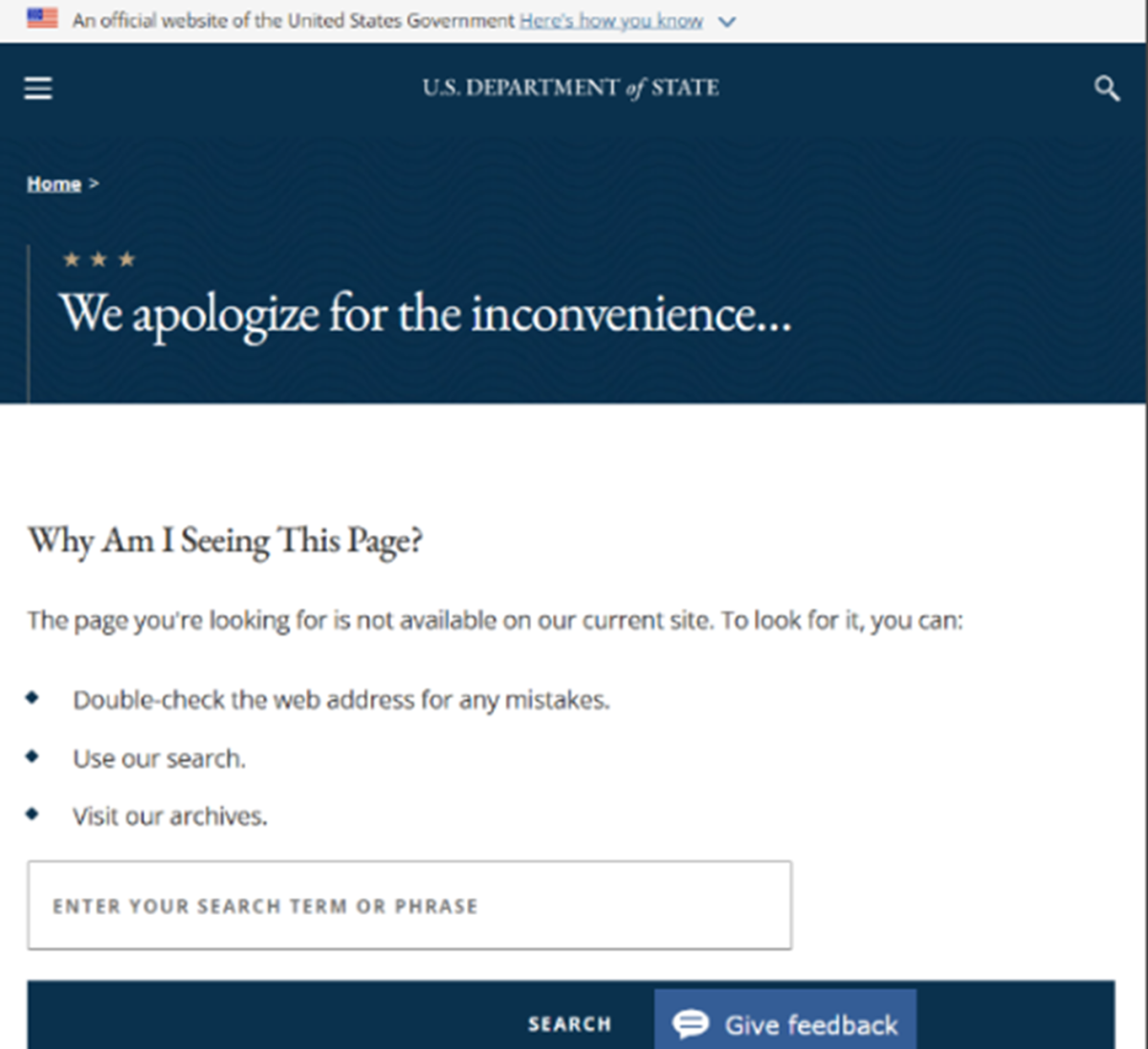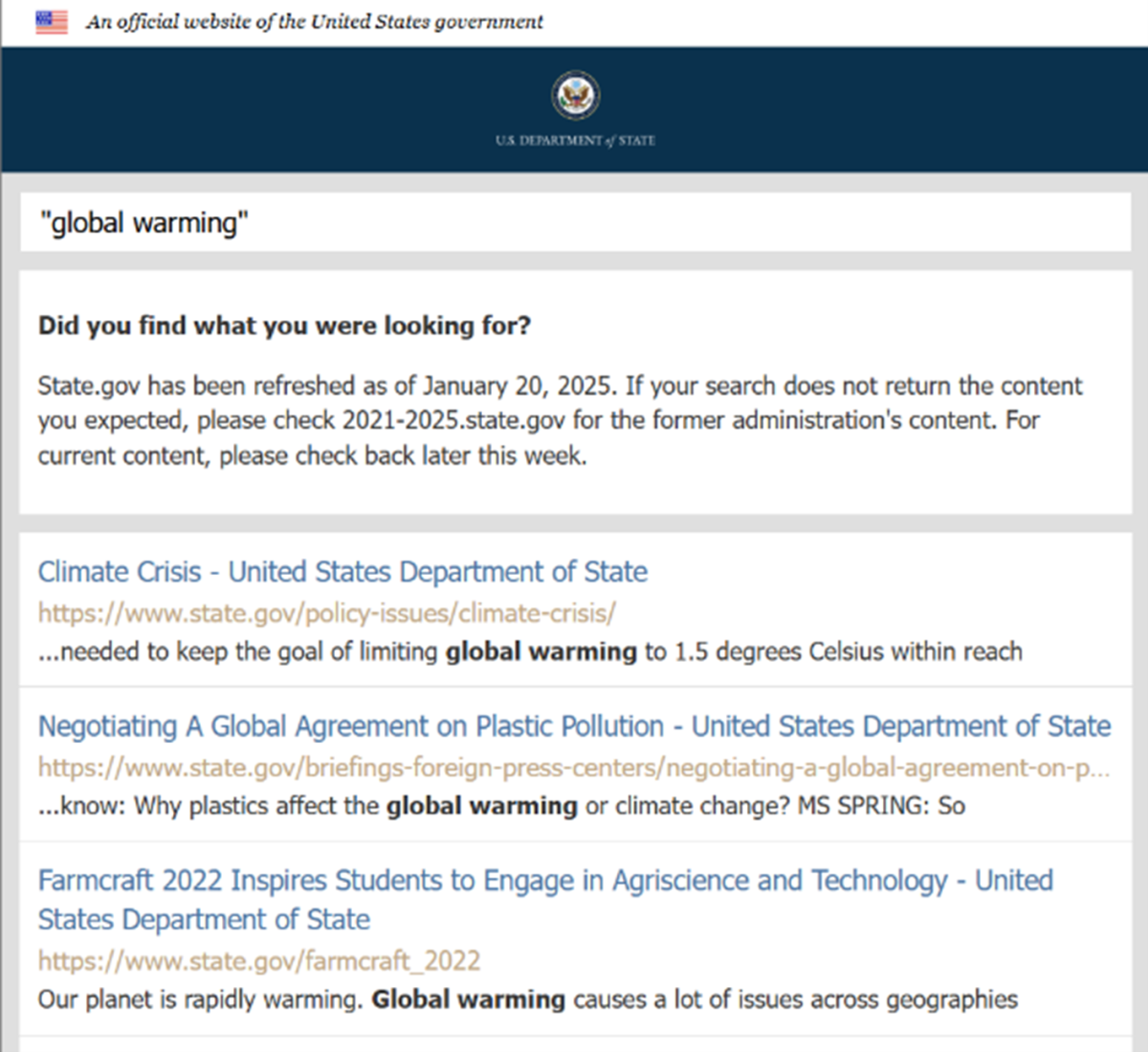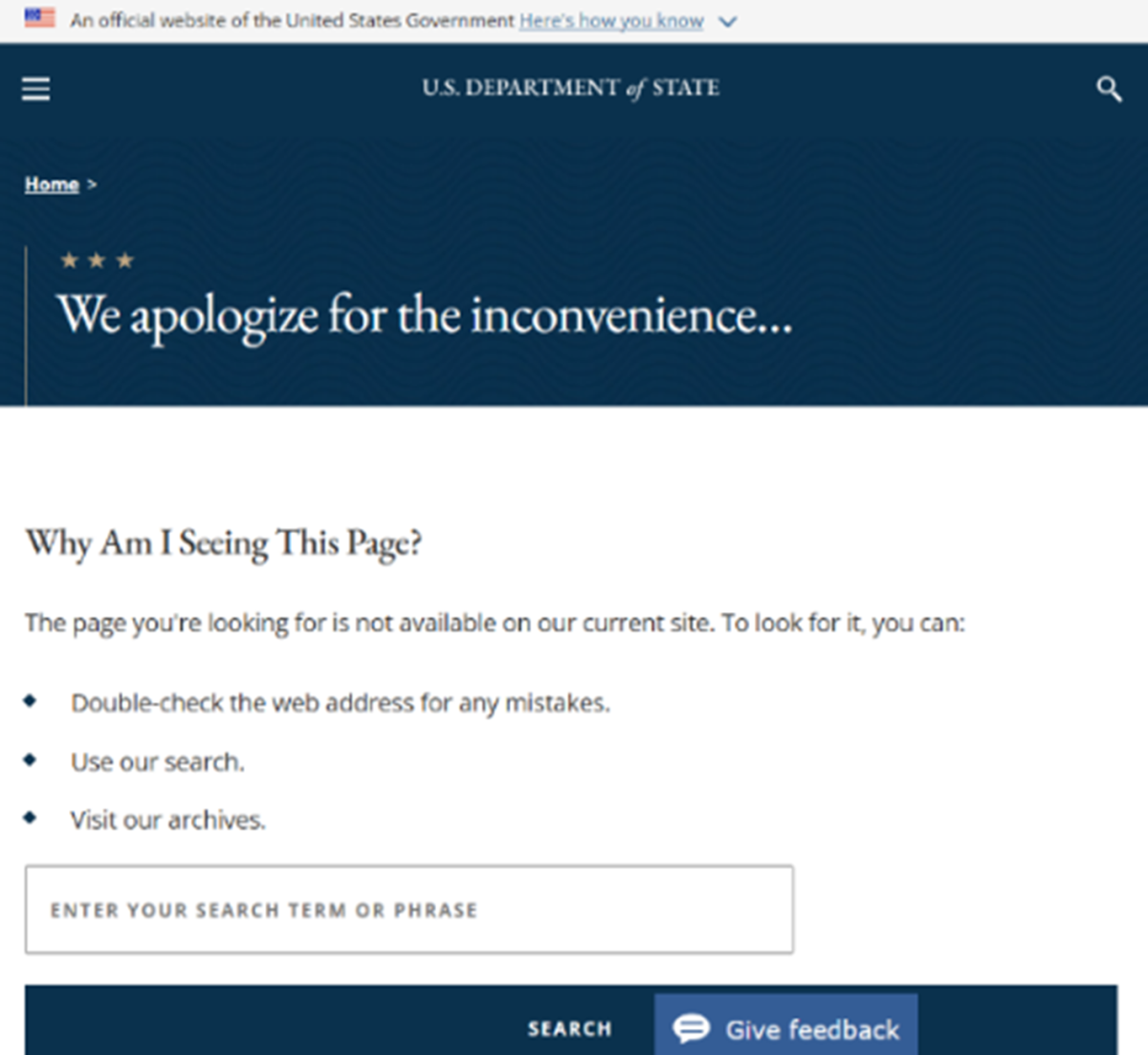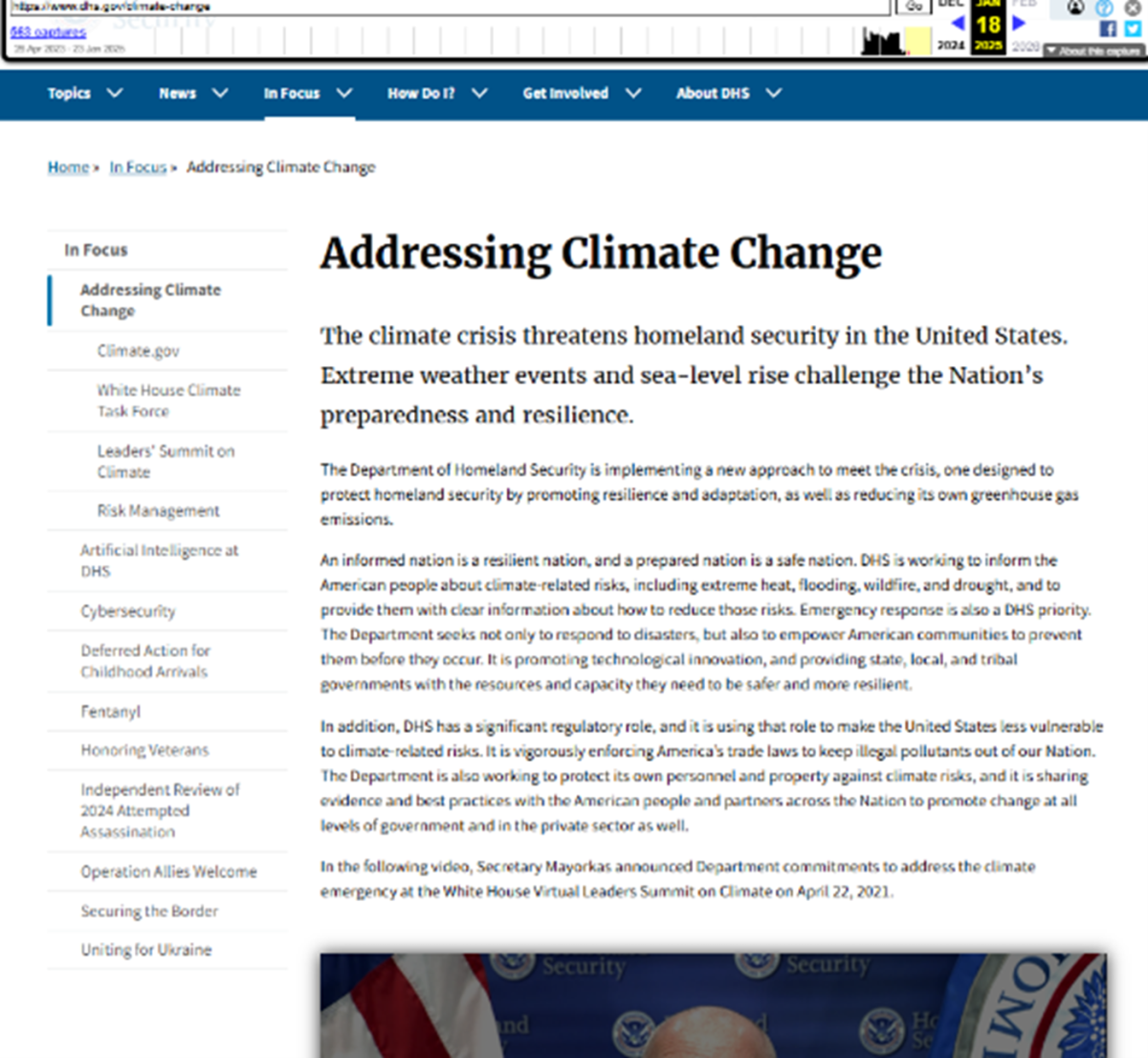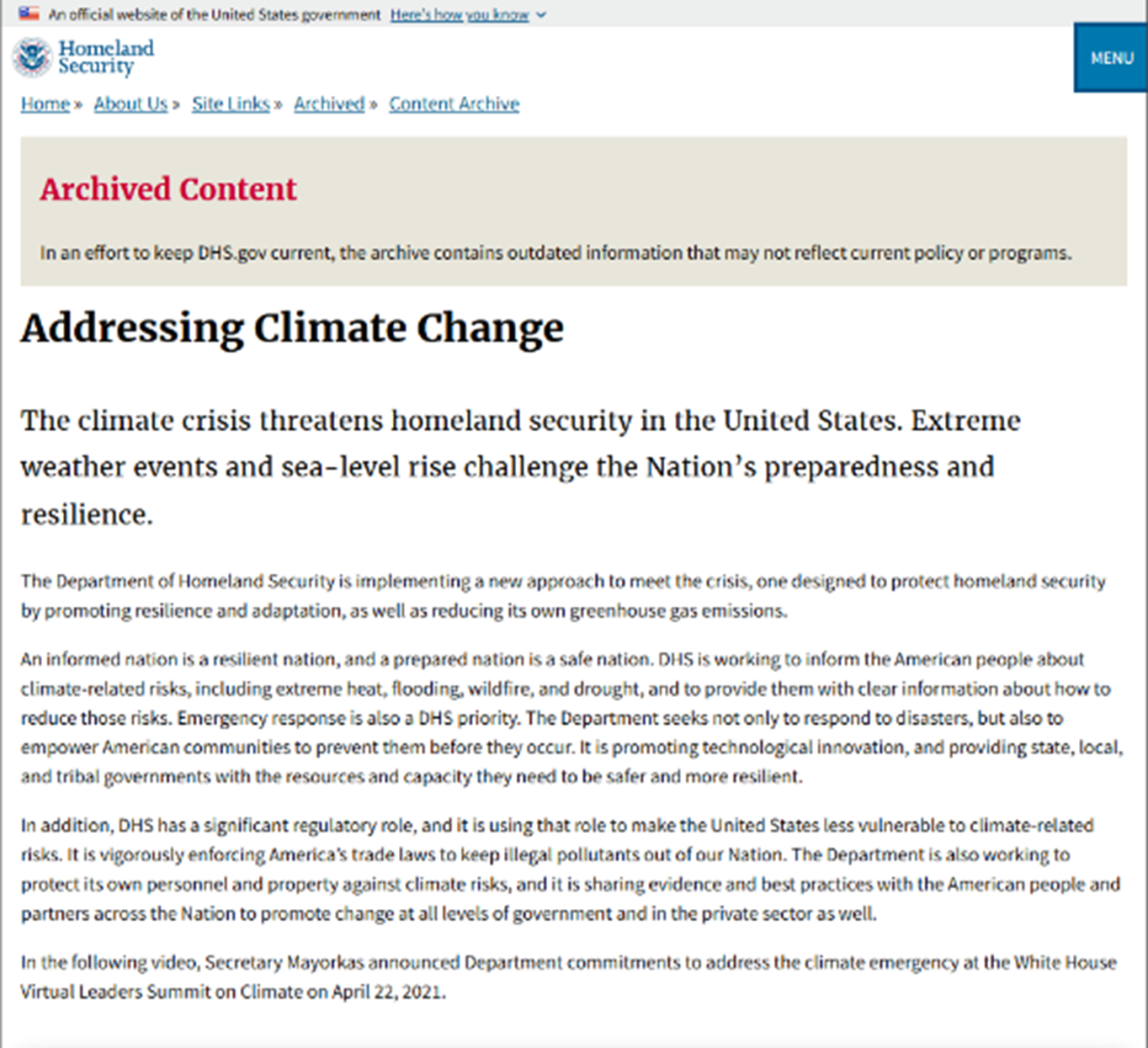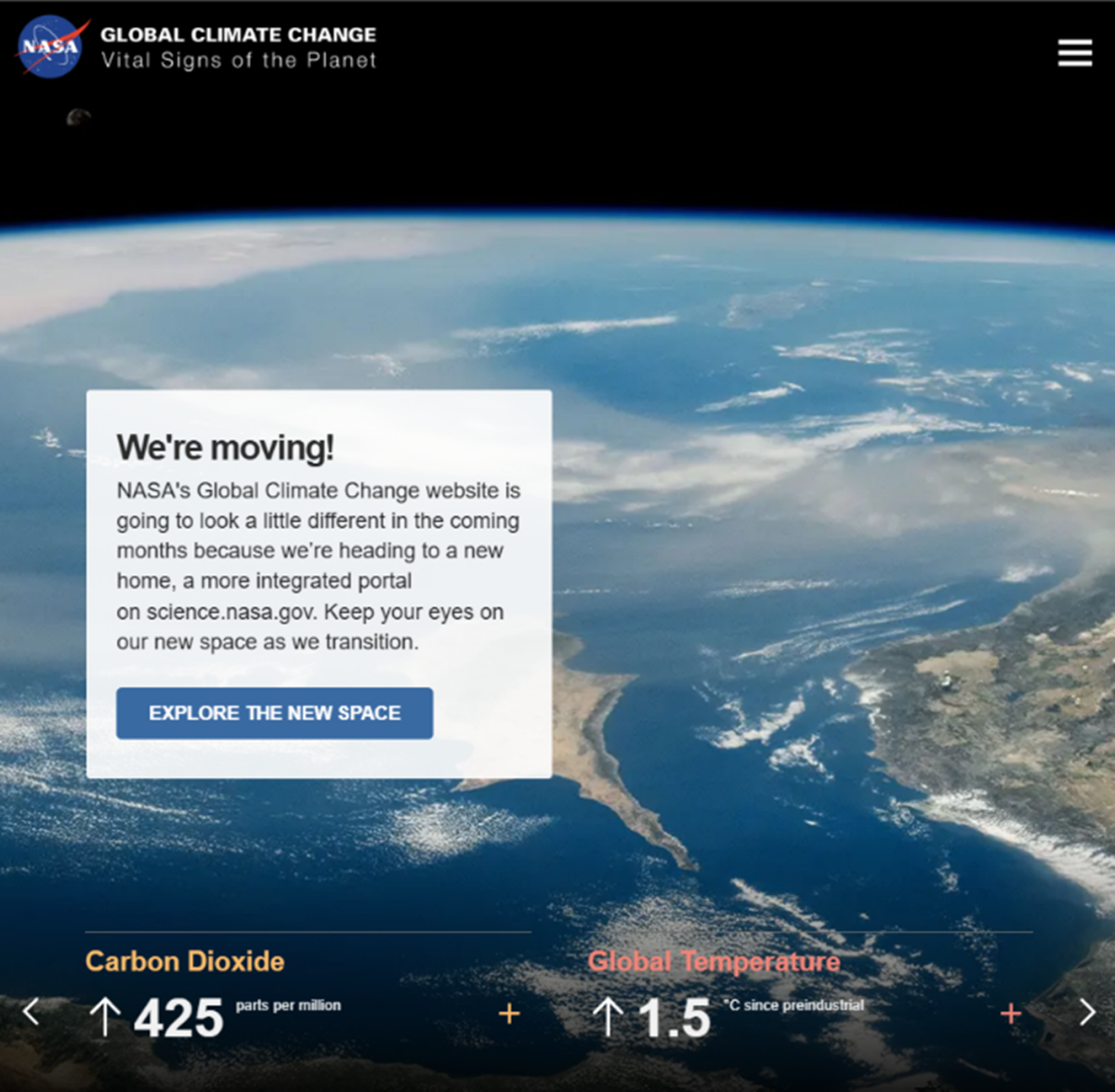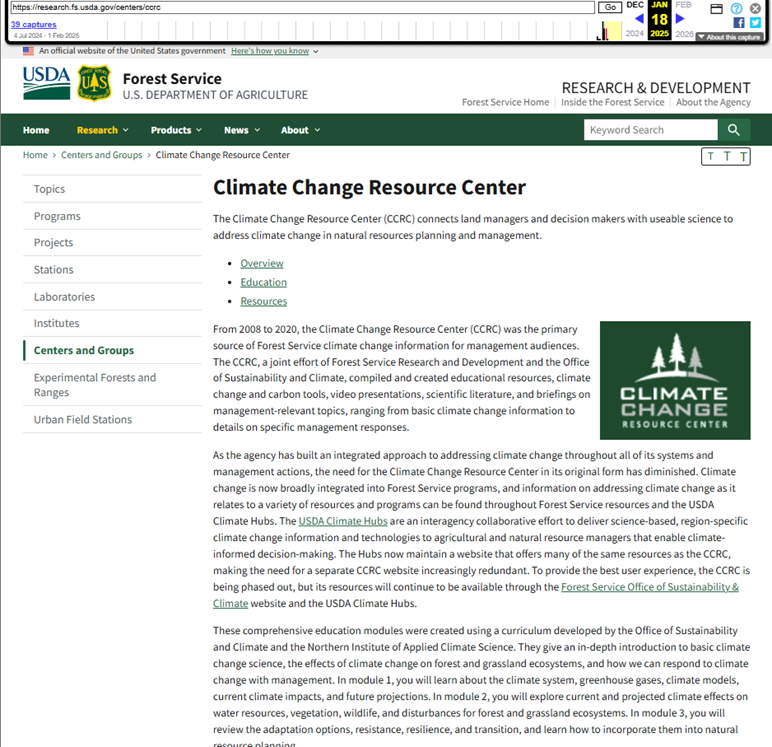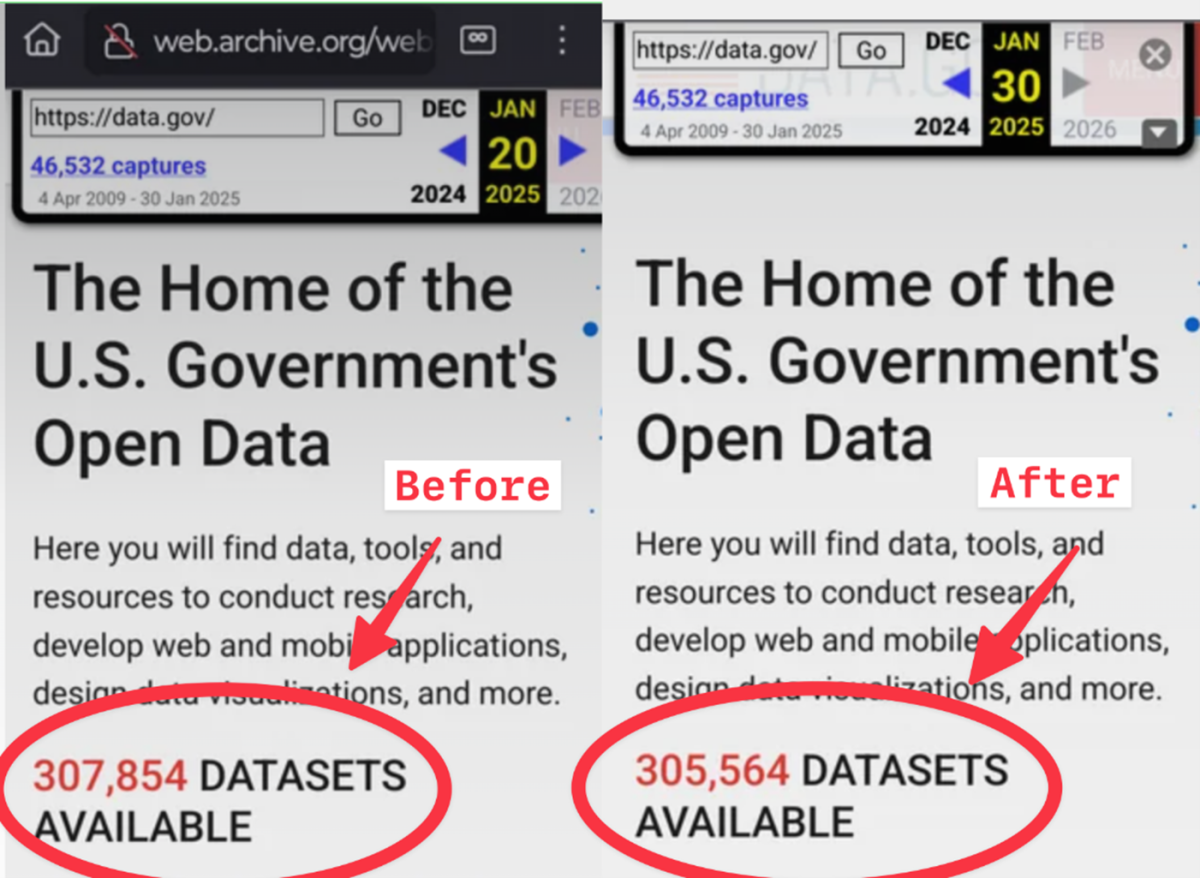Disappearing Data:
Washington, D.C., February 6, 2025 - In the first two weeks of President Donald Trump’s second term, the administration has begun to scrub critical environmental resources and datasets from federal agency websites. To combat this effort to suppress and censor public data, the National Security Archive’s Climate Change Transparency Project today publishes a selection of materials on climate change and environmental justice that have been deleted from agency web pages and spotlights the environmental and archivist organizations working to identify, scrape, and preserve these critical data.
During President Trump’s first term, organizations like the Environmental Data and Governance Initiative (EDGI) documented the administration’s widespread campaign to suppress climate and environmental data,[1] like when it deleted all webpages, fact sheets, and emissions and financial incentives calculators related to President Obama’s 2015 Clean Power Plan. Since the 2024 presidential election, EDGI and environmental advocacy organizations alike have anticipated the targeting of federal environmental and climate data and have been archiving datasets and preparing to rebuild public access to web tools.
So far, one of the most glaring deletions from the current administration has been the removal of the White House pages on the Council of Environmental Quality (CEQ) and the Office of Science and Technology Policy (OSTP), divisions within the Executive Office of the President that coordinate federal environmental and scientific efforts and work closely with federal agencies and other White House offices on environmental energy policies and initiatives. (Figures 1A and 1B)
During the Biden administration, CEQ—an office established in 1969 by the National Environmental Policy Act (NEPA) under Republican President Richard Nixon—created the Climate and Economic Justice Screening Tool (CEJST), a public web tool which allowed users to locate communities in the U.S. facing marginalization and disproportionate climate and pollution impacts.[2] The current Trump administration has already removed access to the tool and to CEQ’s webpage on the White House website. (Figure 1C) Three days after the CEJST was taken offline, EDGI and fellow members of the Public Environmental Data Partners (PEDP) posted an “unofficial but functional copy” of the tool, restoring public access for the time being.[3]
The website of the Environmental Protection Agency (EPA)—which Trump sought to dismantle through a rollback of regulations during his first term and which has seen its authority whittled down by a more conservative Supreme Court—experienced its own overhaul last week when the administration deleted all references to climate change from its homepage and other prominent parts of the site. Although the EPA’s “Climate Change Impacts” page still exists, it is buried deep in sections of the website that are harder to find, and the topic of climate change has been removed from the homepage’s “Environmental Topics” section.[4] (Figures 2A, 2B, and 2C)
Climate change has for years been a cornerstone policy issue for many other agencies as well. This was strengthened during the last four years as the former Biden administration sought to integrate climate adaptation and resilience plans across 20 federal agencies.[5] Under Biden, the State Department’s website had two “Policy Issues” sections on “Climate and Environment”[6] and the “Climate Crisis”[7] filled with documents related to U.S. climate policies aimed at cutting emissions of greenhouse gases like carbon dioxide and methane to meet the terms of the 2015 Paris Agreement. The current “Climate and Environment”[8] page has been pared down and includes no mention of the Paris Agreement (which the Trump Administration officially withdrew from for a second time on his first day in office), and the “Climate Crisis” page has been removed. (Figures 3A and 3B) Now, a search for “global warming” leads to a list of defunct links. (Figures 3C and 3D)
Additionally, the Department of Homeland Security (DHS), the agency currently at the center of President Trump’s immigration executive actions, removed several of its “In Focus” topics including a section called “Addressing the Climate Crisis.”[9] (Figures 4A and 4B) Previously, users could access information on “FEMA Floodplain and Flood Map Resources,” guidance on extreme temperatures and heat tools, and reports like the agency’s “Strategic Framework for Addressing Climate Change”[10] and its “Climate Action Plan.”[11] Now, along with the removal of the “Addressing the Climate Crisis In Focus” topic, DHS has also removed its pages on “Artificial Intelligence at DHS,” “Deferred Action for Childhood Arrivals (DACA),” “Honoring Veterans,” “Operation Allies Welcome,” and “Securing the Border.” (Figure 4C)
Notably, the National Oceanic and Atmospheric Agency (NOAA), which may be the next target of the White House’s Department of Government Efficiency (DOGE),[12] still has a live Climate page,[13] including a variety of tools and resources, funding opportunities, and a “Climate 101” section.[14] While unchanged at the time of this publication, the agency’s global climate data distribution system, the National Centers for Environmental Information (NCEI), is undergoing “scheduled maintenance” from February 4-6, according to the banner announcement on the NCEI page.[15] Similarly, the Department of Defense’s website still includes a live and unchanged “Spotlight on Tackling the Climate Crisis,”[16] which states that DOD is “elevating climate change as a national security priority, integrating climate considerations into policies, strategies and partner engagements.” And although key climate information is still spread sporadically throughout the National Aeronautics and Space Administration (NASA) website, the agency’s climate website displays a message about moving to a “more integrated portal on science,” and the word “climate” is removed from its URL.[17] (Figure 5)
Most recently, the White House ordered the Department of Agriculture (USDA) to take down all websites referencing the climate crisis,[18] most impacting the United States Forest Service (USFS) website, which previously included key resources, research, and adaptation tools, such as vulnerability assessments for wildfires. At the time of this publication, the USDA’s “Climate Hubs” sites are still live, but sites including the USFS “Climate Change Resource Center,” the “Climate Change Action Tracker,” and the “National Roadmap for Responding to Climate Change” have gone dark. (Figures 6A and 6B)
Since President Trump’s inauguration on January 20, 2025, more than 2,000 datasets have also disappeared from data.gov, the largest repository of U.S. government open data on the internet. (Figure 7) At the time of this posting, there are currently 306,770 datasets available, still over 1,000 fewer than before President Trump assumed office. According to 404 Media, it is still “too early to say what, specifically, has been deleted, though archivists and academics…are working on triaging the situation.”[19]
As these sites and datasets go dark, environmental and archivist organizations, researchers, and citizens are racing to save government resources from vanishing entirely. The End of Term Web Archive Project—an effort that partners with EDGI, PEDP, the Common Crawl, universities, the U.S. National Archives and Records Administration and the U.S. Government Publishing Office—preserves web material from previous administrations through a series of web crawlers that scrape federal websites and data. Every four years, librarians, archivists, and technologists undertake an “end-of-term-crawl” to capture websites that preserve the historical record as one administration ends and another begins. The data collected during the end-of-term crawls lives on the Internet Archive’s Wayback Machine, a longstanding and valuable public tool containing billions of webpages that can be searched and downloaded as bulk data. According to project participants, the initiative aims to safeguard “democracy itself.”[20]
Figures
Figure 1A: Archived Council on Environmental Quality homepage from the Biden Administration on the Internet Archive’s Wayback Machine (Wayback Machine archive screenshot taken on January 19, 2025. National Security Archive screenshot taken on February 5, 2025)
Figure 1B: Current White House landing page for the Council of Environmental Quality, which then automatically directs its users to the White House homepage. All mention of CEQ has been removed from the current White House website (National Security Archive screenshot taken on February 5, 2025)
Figure 1C: Current White House landing page for the Council on Environmental Quality’s Climate and Economic Justice Screening Tool (National Security Archive screenshot taken on February 5, 2025)
Figure 2A: Archived Environmental Protection Agency homepage from the Biden Administration on the Internet Archive’s Wayback Machine listing “Climate Change” under “Environmental Topics” (Wayback Machine archive screenshot taken on January 19, 2025. National Security Archive screenshot taken on February 5, 2025)
Figure 2B: Current Environmental Protection Agency homepage. “Climate Change” has been removed from the list of “Environmental Topics” (National Security Archive screenshot taken on February 5, 2025)
Figure 2C: Current Environmental Protection Agency “Climate Change Impacts” page. (National Security Archive Screenshot taken on February 5, 2025)
Figures 3A: Archived State Department landing page for the “Climate Crisis” Policy Issue (State Department archived websites are maintained by the National Archives and Records Administration. National Security Archive screenshot taken on February 5, 2025)
Figure 3B: Current State Department landing page for the “Climate Crisis” Policy Issue page (National Security Archive screenshot taken on February 5, 2025)
Figure 3C: Current State Department landing page for a “global warming” search (National Security Archive screenshot taken on February 5, 2025)
Figure 3D: Current State Department landing page when clicking on the “Negotiating A Global Agreement on Plastic Pollution” link listed in Figure 3C (National Security Archive screenshot taken on February 5, 2025)
Figure 4A: Archived Department of Homeland Security “Addressing Climate Change” page (Wayback Machine archive screenshot taken on January 19, 2025. National Security Archive screenshot taken on February 5, 2025)
Figure 4B: Current Department of Homeland Security “Addressing Climate Change” landing page brings users to “Archived Content” (National Security Archive screenshot taken on February 5, 2025)
Figure 4C: Current list of Department of Homeland Security “In Focus” Issues (National Security Archive screenshot taken on February 5, 2025)
Figure 5: Current National Aeronautics and Space Administration “Global Climate Change” landing page (National Security Archive screenshot taken on February 5, 2025)
Figures 6A: Archived Department of Agriculture Forest Service “Climate Change Resources Center” from the Biden Administration on the Internet Archive’s Wayback (Wayback Machine archive screenshot taken on January 18, 2025. National Security Archive screenshot taken on February 5, 2025)
Figure 6B: Current Department of Agriculture Forest Service landing page for its “Climate Change Resources Center” National Security Archive screenshot taken on February 5, 2025)
Figure 7: Before and After Screenshot of the datasets available on data.gov (Wayback Machine archive screenshots taken on January 20 and 30, 2025. Image source: 404 Media)[21]
Notes:
[1] Nost E, Gehrke G, Poudrier G, Lemelin A, Beck M, Wylie S, et al. (2021) Visualizing changes to US federal environmental agency websites, 2016–2020. PLoS ONE 16(2): e0246450.
[2] Environmental Data & Governance Initiative, “Trump Removes Access to CEJST, Our New Coalition Restores it.”
[3] Environmental Data & Governance Initiative, “Climate and Economic Justice Screening Tool.”
[4] Environmental Protection Agency, “Climate Change Impacts.”
[5] Biden Administration White House, “FACT SHEET: Biden Administration Releases Agency Climate Adaptation and Resilience Plans from Across Federal Government.”
[6] 2021-2025 State Department Archived Content, “Policy Issues - Climate and Environment.
[7] 2021-2025 State Department Archived Content, “Policy Issues – The Climate Crisis: Working Together for Future Generations.”
[8] State Department, “Policy Issues – Climate and Environment.”
[9] Internet Archive Wayback Machine, Archived Department of Homeland Security content, “Addressing Climate Change.”
[10] Internet Archive Wayback Machine, Archived Department of Homeland Security Content, “DHS Strategic Framework for Addressing Climate Change.”
[11] Internet Archive Wayback Machine, Archived Department of Homeland Security Content, “DHS Climate Action Plan to Address the Impacts of Climate Change and Ensure the Department’s Climate Resilience.”
[12] Laura Geller and Tracy J. Wholf, “Democrats concerned DOGE is targeting NOAA, sources say.”
[13] National Oceanic and Atmospheric Administration, “Climate” page.
[14] National Oceanic and Atmospheric Administration, “Climate 101” page.
[15] National Oceanic and Atmospheric Administration, “National Centers for Environmental Information”.
[16] United States Department of Defense, “Spotlight – Tackling the Climate Crisis.”
[17] National Aeronautics and Space Administration, “Global Climate Change” page.
[18] Zack Colman and Marcia Brown, “USDA ordered to scrub climate change from websites,” Politico.
[19] Jason Koebler, “Archivists Work to Identify and Save the Thousands of Datasets Disappearing from Data.gov.” 404 Media.
[20] Leslie Katz, “Meet the Citizens Racing to Save Government Websites From Vanishing,” Forbes.

